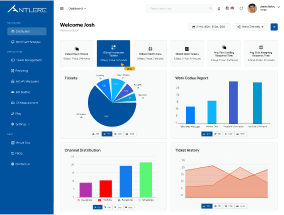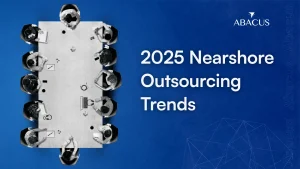Why HIPAA Compliance Matters: Risks and Penalties for Non-Compliance Explained
Here’s a scenario to consider: A small healthcare practice loses a laptop that includes thousands of patient records. The leak is not deliberate, but the harm is sudden: Patients’ trust is broken, clinic faces regulatory scrutiny and word spreads rapidly on social media. Within weeks, the fines and lawsuits start to pile up.
This is not hypothetical. And that’s the cold, hard truth of HIPAA non-compliance: A potentially devastating and expensive lapse that no healthcare organization and their related partners can afford to make. The Health Insurance Portability and Accountability Act (HIPAA), passed in 1996, isn’t just a column of bureaucratic requirements; it’s the foundation for how the U.S. protects patient data – and not adhering to it can result in financial fines, legal trouble, and permanent reputational damage to an organization.
Understanding HIPAA Compliance: A Quick Refresher
HIPAA compliance was fundamentally created to stave off Protected Health Information (PHI) – any health-related information attributable to patients. It is for both covered entities (doctor’s offices, insurance companies and clearinghouses) and business associates (companies you work with or vendors who handle your PHI).
The law has two main objectives:

Put simply, HIPAA is all about preserving patients’ confidence while allowing the gears of the healthcare industry to turn freely.
What Non-Compliance Looks Like
Non-compliance can take many forms – some deliberate, others inadvertent. For instance:
- A patient’s records are retrieved by an employee without permission.
- A hospital has misconfigured access controls and owes data including PHI to hackers.
- A business partner places unencrypted data in the cloud without protections.
Each is also a violation of HIPAA, and can result in significant repercussions.
The Risks of Ignoring HIPAA Compliance
HIPAA non-compliance is not only about the fines — it’s a layered risk. Companies also risk regulatory, financial, legal and reputation threats. Let’s break it down.
1: Financial Penalties
According to the U.S. Department of Health and Human Services (HHS) and the Office for Civil Rights (OCR), fines range based on the severity of the breach and whether it was intentional or not. Fines can be $127 and $1.9 million per violation per year (HHS, 2024). Even a single fine can be devastating for smaller clinics
2: Criminal Charges
Criminal penalties for the misuse of PHI Individuals who gain access to PHI and use such information for personal gain or malicious intent can be met with criminal charges, possibly resulting in prison time. The DOJ has levied several cases involving employees selling or using patient information.
3: Operational Disruptions
Lost time in being investigated for non-compliance can also lead to lost production opportunities, waste valuable leadership time and prevent business contracts with other partners.
4: Reputational Damage
Trust is the bedrock of medicine. The reputation damage for an organization that follows a data breach can be long lasting. Ponemon Institute (2023) reported that 65% of patients would be likely to seek a new healthcare provider following a breach.
5: Civil Lawsuits
Patients whose data is breached could sue, especially if there was negligence. The settlements themselves often cost millions, inflicting a second layer of financial damage.
HIPAA Penalty Tiers: Explained
HIPAA Compliance penalties are classified into four levels, depending on the awareness and efforts of the affected entity.
Tier | Description | Penalty Range (per violation) | Example Scenario |
Tier 1 | Unaware of the violation and could not have avoided it | $127 – $63,973 | A clinic unknowingly uses a faulty vendor system with vulnerabilities |
Tier 2 | Reasonable cause, but not willful neglect | $1,280 – $63,973 | Staff misconfigures access controls without malicious intent |
Tier 3 | Willful neglect, corrected within time frame | $12,794 – $191,860 | Breach discovered, but organization quickly takes corrective action |
Tier 4 | Willful neglect, not corrected | $63,973 – $1.9 million | Organization ignores known risks and fails to act |
These fines can be applied per record, per year, making large breaches astronomically expensive.
Real-World Examples of HIPAA Compliance Violations
To understand the seriousness of non-compliance, let’s look at some recent cases:
- Anthem, Inc. (2018): $16 million was paid after a cyberattack left PHI for close to 79 million individuals exposed.
- University of Rochester Medical Center (2019): Fined $3 million for lack of encryption on mobile devices.
- Premera Blue Cross (2020): $6.85 million settlement following breach impacting 10.4 million people.
They are illustrations that even massive, well-moneyed organizations aren’t shielded from punishment.
Non-Compliance Beyond Money: The Hidden Costs
Non-compliance does not only cost money: spilt costs behind the scenes
- Financial penalties receive headlines, but there are also hidden costs:
- Patient Attrition: Post-breach, Patients are more likely to leave.
- Hiked Insurance Rates: Cyber liability insurance expenses soar following a breach.
- Increased Employee Turnover: When compliance lapses are leaked, it has a direct impact on employee morale.
- Regulatory Scrutiny: After being fined, an organization can be subject to years of audits.
Why Organizations Struggle with Compliance
For all the money at stake, many companies continue to come up short. Common reasons include:
- Lack of regular staff training.
- Inadequate investment in cybersecurity infrastructure.
- Misunderstanding business associate agreements.
- Not updating policies in light of emerging technology.
A 2023 survey by HealthIT. gov found that 45% of health care organizations do not have a fulltime compliance officer, making them more vulnerable.
How to Avoid Non-Compliance
The good news is that being adhere to HIPAA compliance can be had with some proactivity:
- Ongoing Training: Train employees about HIPAA requirements and risks of phishing.
- Risk Reviews: Perform annual risk reviews to uncover weaknesses in your system.
- Encryption & Access Controls: “It’s the technical safeguards that will safeguard PHI.
- Vendor Management: Verify that business associates are in compliance with HIPAA.
- Incident Response Plans: Procedures for fast response when you get breached.
Not only does it minimize the risk of violations, but it also creates organizational resiliency.

HIPAA Non-Compliance: The Bigger Picture
Non-compliance represents more than a breakdown in policy at the organization level it’s a breach of trust with patients. In a digital-first world where sensitive health data is more and more likely to be shared across platforms, HIPAA compliance tells patients their well-being and their privacy comes first.
Failure to do so can mean not only the downfall of an organization in financial terms, but also that it will no longer have a place within a competitive health care environment.
Conclusion: Compliance as a Commitment
It’s not only a matter of “What happens when you don’t follow HIPAA?” The larger question is: “Can you afford not to?”
From million-dollar fines to long-lasting reputational scars, the risks of not getting compliance right are far greater than the cost of doing things properly. Compliance is not simply rule-following, it’s about showing integrity, earning the trust of patients and ensuring that your organization has a long life.
In healthcare, trust is everything. And it’s trust that starts with HIPAA compliance.
Further Reading: What Is a Healthcare BPO Company

Author









